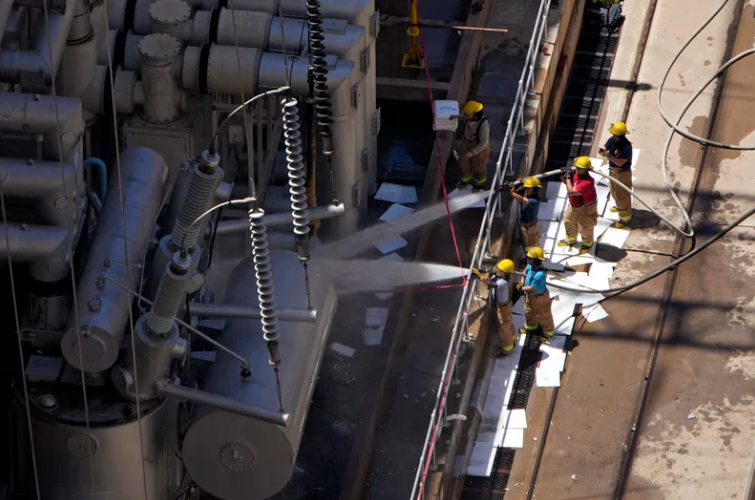OULDER CITY, Nev. (AP) — On Tuesday, a transformer at Hoover Dam, one of the nation’s largest hydroelectric plants, exploded, resulting in a dense cloud of black smoke and flames that were quickly extinguished.
The explosion, which occurred near the base of the dam, which is located on the Colorado River and straddles the state lines of Arizona and Nevada, caused no injuries. According to the Western Area Power Administration, the flow of electricity generated at Hoover Dam to the approximately 8 million people who rely on it in Arizona, Nevada, and Southern California has not stopped.
Officials were assessing the extent of the damage to the transformer, one of 15 at the complex that controls the voltages for power transmission to consumers. The investigation into the cause of the fire is still ongoing.
“There is no risk to the electricity grid,” says Jacklynn Gould, a regional director for the United States Bureau of Reclamation.
According to Gould’s statement, the fire started around ten a.m. and was extinguished within half an hour. As a result, tourists who reported hearing an alert and feeling the ground tremble beneath them were drawn to its attention.
William Herro, now 13 years old and from San Francisco, was on a viewing bridge with his parents when he witnessed the explosion and then heard a “huge boom.”
“A massive smoky explosion has just occurred in the atmosphere. It appeared to be something resembling a mushroom, and then a fire broke out “Herro stated. “I was completely taken aback, and I started filming right away.”
The explosion occurred about 25 miles (40 kilometers) southeast of Las Vegas, on the apron of a structure that houses turbines and is located somewhat downstream from the dam’s base. The Hoover Dam, at 726 feet in height, is one of the tallest concrete structures in the United States (221 meters). Each of its 17 generators is capable of supplying electricity to 100,000 homes.
Every day, as many as 20,000 cars cross the dam’s wide crest, which is a National Historic Landmark and has appeared in films such as Transformers and Fools Rush In. The majority of drivers who travel between Arizona and Nevada use a bridge built in 2010 to bypass a dam. This bridge was completed in 2010.
The Bureau of Reclamation owns and operates the dam, as well as the associated powerhouses and turbines. The Western Area Power Administration is in charge of distributing the electricity generated at the site after it has been sent to a substation and stored there.
The Hoover Dam is a baseload power source, which means it can quickly respond to increased grid demand for increased power or dial back supply.
As a result of the fire, the Western Area Power Administration’s control center in Phoenix issued an alert. Although the loss of a transformer or other equipment on hydroelectric plants can cause grid stress, a spokesperson named Lisa Meiman stated that “no single source is critical to the health of the electricity grid.”
The administration is in charge of marketing the power generated by the country’s 57 hydroelectric projects. The Hoover Dam and the Glen Canyon Dam, which are located upstream on the Arizona-Utah border, are among the largest, according to Meiman.
The water levels in Lake Mead and Lake Powell, the two largest reservoirs in the United States built by humans to store water from the Colorado River, have recently dropped, threatening the hydropower generated by both dams.
Federal officials have taken steps in recent years to shore up the lakes in order to protect the dams’ ability to generate power and keep water flowing to the western states and Mexico that rely on it. As a result, the dams can continue to function as intended. As a result of climate change and drought, the lakes have reached their lowest levels in decades.
